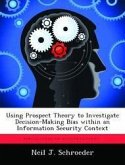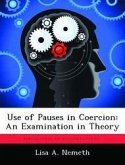This paper examines a model for thinking about coercion that explains airpower's role in achieving national objectives. Coercion is the use of power to achieve objectives, not by imposing the desired conditions upon an adversary, but rather by convincing the adversary to accept and implement those conditions as a negotiated solution to a confrontation. The foundation of coercion is the adversary's decisionmaking process, and most theories of coercion rely on a rational model that weighs costs, benefits, and expectations for success. Prospect theory provides a broad and intuitively appealing perspective on coercion, one that demands we consider the alternatives the adversary faces when we ask him to give up a course of action. Additionally, it incorporates the concept of risk, and thereby attempts to account for the variety of risk-taking and conservative behavior we see in conflicts throughout history. The central proposition is that how decisionmakers frame problems guides the decisions they make. A prospect theory model of airpower coercion is developed here that defines framing, decision parameters, alternatives of continuing action or acquiescing to demands, and airpower linkages. Six historical cases are examined to explore the value of the model, and they illustrate some distinct insights the model provides. Airpower strategies of punishment, denial, decapitation and airlift are shown to have multiple effects which influence many areas of the decisionmaking process. Strategists and organizations can derive a number of recommended tools and lessons from an examination of the model.
Hinweis: Dieser Artikel kann nur an eine deutsche Lieferadresse ausgeliefert werden.
Hinweis: Dieser Artikel kann nur an eine deutsche Lieferadresse ausgeliefert werden.








